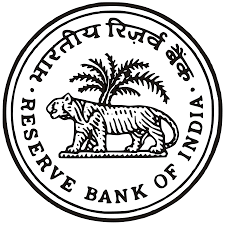The tussle between RBI and Government is not new, it happened in the past several times.
But unlike now, past differences between them were handled with greater subtlety.
Recently, deputy Governor Viral Acharya gave the public speech in which he warned against
government interference in the RBI’s functioning.
Concerns of RBI:
1.RBI wants more power over regulating Public Sector Banks (PSBs).
2. The government should not dictate the quantum of surplus that is paid as an annual
dividend. The central government has eyed on RBI’s burgeoning reserves to bridge its
fiscal gap.
3. Centre wants a separate payment regulator.
Concerns of Centre:
1. Recently RBI has scrapped all the past restructuring mechanisms through its circular
of February 12 which redefined NPAs and revised the framework for resolution.
2. The Centre sees the prompt corrective action (PCA) framework by the RBI, which
restricts weak banks from lending, as contributing to the liquidity crisis.
3. Centre finds RBI guilty of not detecting bad loans of banks and NBFCs in time
especially IL& FS crises.
4. It also wanted special dispensation by the RBI to help non-banking finance
companies (NBFCs) apart from relaxed norms for lending to micro, small and
medium enterprises.
Major issues between the RBI and the Centre:
1. Regulation of PSBs: The influence or non-influence of the RBI over public sector banks (PSBs) has been a contentious issue that has played out in two different ways. The first was in the aftermath of the Nirav Modi-Punjab National Bank scam, with Government laying the majority of the blame for this to supervisory agencies. The central bank responded by saying responsibility instead should be shouldered by the owner of Punjab National Bank (the Modi government), its management and the bank’s board. In other words, RBI wants more supervisory power over PSBs.
2. PCA Framework: Centre wants to dilute the PCA framework so that weaker banks are allowed to lend again which could boost credit growth in certain areas of the Indian economy. But RBI wants tighter PCA framework to deal with financially weak banks.
3. NPA Rules: In February 2018, the RBI kicked off an accelerated process for dealing with stressed assets: a new set of rules were put out that asked all banks to initiate a resolution plan even if there was a single-day-delay in repayment of dues by large corporate borrowers. This move proved to be particularly damaging to India’s power sector. After power companies took the issues to the courts, Allahabad High Court noted that the government could force the RBI to dilute its stricter bad loan norms for the power sector if it wanted to, under Section 7 of the RBI Act. However, this step was not taken.
4. An independent payments regulator: Currently, all payment systems are managed by RBI and National Payments Corporation of India (NPCI). The government wants to set up an independent “payment regulatory board”, which will oversee all payment systems in India and be outside the purview of the RBI. But RBI has opposed such a move.
5. Easing credit to small firms: It is reported that the Government pushed for easing NPA rules for small and medium businesses which have taken loans. However, on the other hand, concerns over potential defaults in MSME sector were recently flagged by former RBI governor Raghuram Rajan in a letter sent to a parliamentary panel.
6. RBI’s reserves and surplus: Every year RBI earns interests from the domestic and foreign bonds it holds. This income is used in running the operation of RBI and rest is accrued as surplus. Out of this surplus, RBI holds some amount to itself as equity capital to maintain its creditworthiness and pays the rest to the government. The 2015 RBI’s risk analysis showed that its equity position of around Rs 10 lakh crore was adequate, the Central Bank decided to transfer its entire surplus to the government. However, the government is of the opinion that RBI should pay more dividend to build the buffer and asset reserve by RBI has been far in excess of what is required to maintain creditworthiness. On the other hand, RBI is of the view that increasing the dividend payment to the government can prove to be inflationary which may harm them macroeconomic indicators.
What needs to be done?
The tussle between RBI and Government may impact the image of India as stable market,
therefore it is necessary that government should respect the mandate of RBI as Central
Bank. At the same time, it must also be understood that RBI has adequate autonomy within the mandate of the RBI Act. Therefore, both parties must talk behind closed doors resolve their differences amicably as they have done so many times in the past.
By CL IAS TEAM





















































